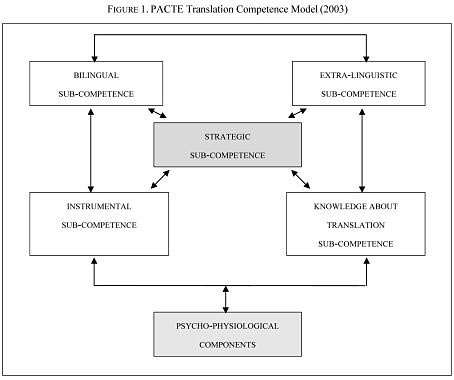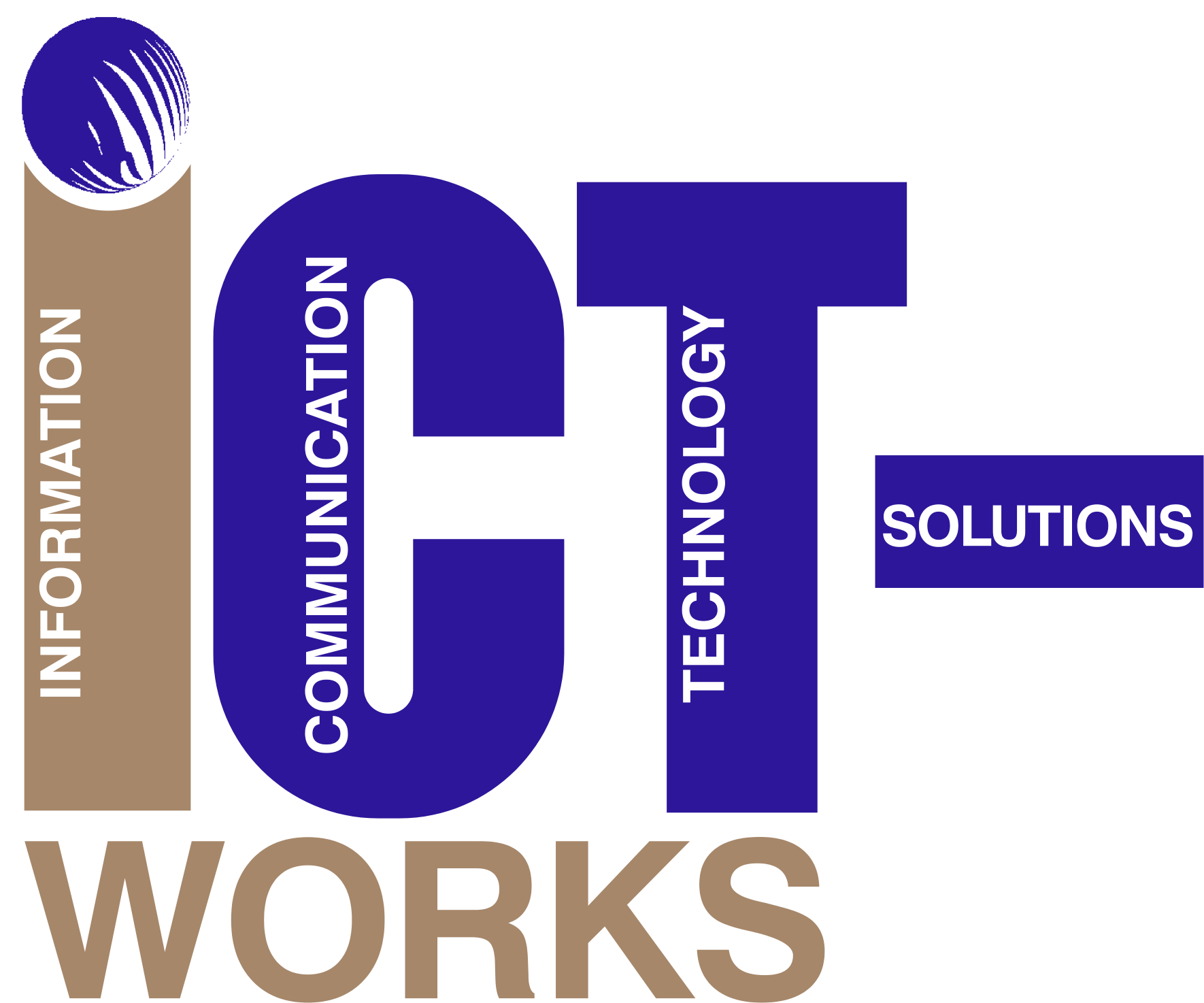TRANSLATION 2
THE NEW INFORMATION AND
COMMUNICATION TECHNOLOGIES (ICTS) AND TRANSLATION COMPETENCE
TRANSLATION COMPETENCE.
·
It is something
that distinguishes a bilingual person from a professional translator.
·
The competence needed to translate has also evolved
due to different factors, mainly technological factors. In order to be a
competent translator it is necessary to be computer literate and to keep one’s
information technologies skills updated.
·
Competence is the combination of skills, attitudes and
behavior that leads to an individual
being able to perform a certain task to a given level.
AUTHORS THAT HAVE DEFINED
“TRANSLATION COMPETENCE.
•
Bell (1991: 43)
defines translation competence as “the knowledge and skills the translator must
possess in order to carry out a translation”.
•
Hurtado Albir defines
it as “the ability of knowing how to translate” (1996: 48).
•
Wilss says
translation competence calls for “an interlingual supercompetence [...] based
on a comprehensive knowledge of the respective SL and TL, including the
text-pragmatic dimension, and consists of the ability to integrate the two
monolingual competencies on a higher level” (1982: 58).
•
Process of the
Acquisition of Translation Competence and Evaluation (2000, 2003, 2005).
Translation competence is the
ability to carry out the transfer process from the comprehension of the source
text to the reexpression of the target text, taking into account the purpose of
the translation and the characteristics of the target-text readers.
TRANSLATION
COMPETENCE MODEL (PACTE)

•
The bilingual sub-competence consists of the
underlying systems of knowledge and skills that are needed for linguistic
communication to take place in two languages.
•
The extra-linguistic sub-competence is made up
of encyclopedic, thematic and bicultural knowledge.
•
The translation knowledge sub-competence is
knowledge of the principles guiding translation, such as processes, methods,
procedures, and so forth.
•
The instrumental sub-competence comprises the
knowledge required to work as a professional translator, such as the use of
sources of documentation and information technologies applied to translation.
•
The strategic sub-competence integrates all the
others and is the most important, since it allows problems to be solved and
ensures the efficiency of the process.
•
The psycho-physiological components are cognitive and
behavioral and psychomotor mechanisms.
SUB-COMPETENCES PROPOSED BY KELLY (2005)
• Textual and communicative competence
• Cultural and intercultural competence
•
Competence about the knowledge of the theme of the
translation
• Professional and instrumental competence
• Interpersonal competence
•
Competence related with the aptitudes necessary for a
good composition and production of texts.
GENERAL ICTS FOR TRANSLATORS.
The Internet.
•
One of the most important tools offered by the
Internet arethe search and location information engines.
•
They allow to access in a few seconds to an enormous
quantity of interrelated information. Further, the usefulness of these tools in
our work as medical translator will be explained.

The use of corpus linguistics.
•
It is classified in two types:
1. The monolingual corpora (for
example Corpus de Referencia del Español Actual) of the Royal Spanish Academy.
2. Bilingual corpora, it is
divided in parallel corpus and comparable corpus.
Concordance generator programs.
•
They can find all the times that a certain term
appears in a text or in several texts written in electronic format.
SPECIFIC ICTS FOR TRANSLATORS.
Machine translation (MT).
•
Machine Translation is a procedure whereby a computer
program analyzes a source text and produces a target text without further
human intervention.
Computer-assisted
translation (CAT)
• Is a form of translation
wherein a human translator creates a target text with the assistance of a
computer program. The machine supports a human translator.
•
Effective use of translation technology starts from
the translator's point of view.
PHASES OF TRANSLATION: RECEPTION, TRANSFER, AND FORMULATION.
Reception
phase.
• It is about to fully understand
the content of the source text. (Internet)
Transfer
phase.
•
The adaptation of the source text information to the
context of the target text culture is uniquely translational.
Formulation phase.
• Confronts the
translator with challenges regarding the production of the target language
text. (Dictionaries and terminology
databases)
CONCLUSIONS.
•
The new Information and Communication Technologies are
very useful for the professional translator.
•
In order to be a competent translator in our days it
is necessary to make use of the new ICTs, mainly the general ICT tools.
SERVICES 2THE ROLE OF THE INFORMATION AND
COMMUNICATIONS TECHNOLOGY SECTOR
in Expanding Economic Opportunity
The past fifty years have witnessed
a “revolution” in global economic growth. Yet not everyone has participated in
this revolution. More than 65% of the world population, over four million
people, still lives on the equivalent of less than $4 per person per day.
The world’s poor are severely
constrained – and often completely lacking- in opportunity to do better for
themselves.
When we think about eradicating
poverty, we should think broadly about creating economic opportunity.
“Economic opportunity enables people to manage their assets in ways that
generate incomes and options”.
Four key strategies companies can
use to expand economic opportunity:
The role of ICT Sector in Expanding Economic Opportunity
The Information and Communication
Technology sector has been a pioneer and a powerful catalyst in addressing the
needs and interests of low-income communities in developing countries.
In the 1980s, “universal access” was
a goal, but not the reality of the legacy PTTs (post, telephone and telegraph
services).
Today, the sector includes hardware,
software, the Internet, telephony and content, application and support service,
provided by entities ranging from corporate giants to garage entrepreneurs.
ICT:
·
Reduce
transaction costs and thereby improve productivity
Offer
immediate connectivity- voice, data, visual- improving efficiency, transparency
and accuracy
· Substitute
for other, more expensive means of communicating and transacting, such as
physical travel
·
Increase
choice in the market place and provide access to otherwise unavailable goods
and services
·
Widen
the geographic scope of potential markets, and
·
Channel
knowledge and information of all kinds.

World Bank surveys of approximately
50 developing countries suggest that “firms using ICT see faster sales growth,
higher productivity and faster employment growth”.
ICTs help address economic opportunity obstacles
·
Geographic
isolation
·
Lack
of competition and high prices for consumers
·
Lack
of information and low prices for producers
·
Legal
exclusion
·
Political
voice
·
Social
capital

To fulfill their potential, ICTs
require clean and consistent power, a robust, accessible and affordable
connectivity network, technical literacy, skilled users and support systems,
functional markets, and supportive regulatory and policy frameworks.
ICTs among low-income consumers and households will continue to grow:
1.
Technological
capacity and capabilities continue to expand, and costs continue to fall.
2.
ICTs
become cheaper and more powerful
3.
Economic
opportunity expands.
This will generate new demand for
software, hardware and services.
Innovation
There are two main mechanisms for
this.
1.
Low-income
customers have very sophisticated requirements in terms of relevance.
2.
As
ICT ecosystems develop, local equipment manufacturers, software developers,
contents and service providers, another -including users themselves- can also
be sources of innovation, either adding value to the technologies large
companies are offering or informing innovation by those companies themselves.

In addition,
ICTs can be expected to facilitate many of the innovations that will “blow
back” in other industries from manufacturing to medicine, as well.
Companies are
also creating additional economic opportunity by working to bring smaller,
local firms into their business ecosystems –for example, as manufacturers,
software developers or retailers.
Selling to local markets
We see two
essential and interlocking growth strategies in the ICT sector:
Horizontal
deepening: is
essentially about adding new customers.
Vertical
deepening:
Modalities seek to grow markets by connecting technology more directly to
opportunities and services that increase productivity income and quality of
life thus straightening its value proposition to the purchaser.
Cross-cutting considerations:
·
Learning
about the market
·
Designing
products and services to meet the market’s specific needs
·
Business
model innovation
·
Collaboration
·
Patience
Developing human capital
Large ICT companies are employing
deliberate human capital development strategies aiming to develop employees,
business partners, and customers, both present and future.
The ICT sector requires a certain
level of comfort with technology among customers. Most mayor firms have
implemented technical literacy programs.
Helping to optimize the “rules of the game”
Large ICT companies are helping to
optimize the rules of the game for economic opportunity primarily by advocating
for standards, regulations, and policies that support innovation and growth in
the sector. A number of issues or dilemmas are of specific importance to the
sector in expanding economic opportunity for the poor.
Access and infrastructure: many ICT companies are addressing
access and infrastructure issues through business investment and innovation.
Standards-setting: as new technological capabilities
emerge, new standards need to be developed so that markets can be imagined,
created, and served-expanding economic opportunity for individuals,
entrepreneurs, and institutions of all types and sizes.
Intellectual property rights
regimes:
intellectual property (IP) rights are critical to sustain innovation in the ICT
sector, and yet as knowledge becomes privatized, commoditized, and expensive,
developing countries risk being priced out of the market for the knowledge they
need to advance.
Regulatory harmonization: harmonization between
telecommunication and financial regulators will be key to enabling innovation
and experimentation with business models that cross traditional industry lines
(such as providing financial services via mobile phone or storing health
information on data cards).

Conclusions
A number of factor distinguish the
ICT sector in its potential to expand economic opportunity. First, its products
and services enable individuals, firms, governments, and other players to
expand their economic opportunities as well as create them for others.
Second, ICT companies know well this
dynamic isn’t automatic, but rather depend on a wide range of other factors and
players. This interdependence has led them to take network or ecosystem
strategies which often create large numbers of business opportunities for
others, smaller firms.
Third, underlying these ecosystem
strategies are a fundamental collaborative capability and culture.
Teaching 2
An Effective use of ICT for
Education and Learning by Drawing on Worldwide Knowledge, Research, and Experience:
ICT as a Change Agent for Education
Review
But with the world moving rapidly into digital media and information, the role of ICT in education is becoming more and more important and this importance will continue to grow and develop in the 21st century
Introduction
ICTs have become within a very short time, one of the basic building blocks of modern society.
Computers and their application play a significant role in modern information management, other technologies and/or systems also comprise of the phenomenon that is commonly regarded as ICTs.
Near the end of the 1980s, the term ‘computers’ was replaced by ‘IT’ (information technology) signifying a shift of focus from computing technology to the capacity to store and retrieve information.
This was followed by the introduction of the term ‘ICT’ (information and communication technology) around 1992.
The field of education has been affected by ICTs, which have undoubtedly affected teaching, learning, and research.
Initially computers were used to teach computer programming but the development of the microprocessor in the early 1970s saw the introduction of affordable microcomputers into schools at a rapid rate.
•internet-based services such as electronic mail and the World Wide Web (WWW).
•CD-ROM became the standard for distributing packaged software (replacing the floppy disk)
The 1990s was the decade of computer communications and information access:
•CD-ROM became the standard for distributing packaged software (replacing the floppy disk)
Technologies in the educative process has been divided into two broad categories:
•ICTs in Education.
For many years course have been written around textbooks. Teachers have taught through lectures and presentations interspersed with tutorials and learning activities designed to consolidate and rehearse the content .
Contemporary ICTs are able to provide strong support for all these requirements and there are now many outstanding examples of world class settings for competency.

•teachers should believe in the effectiveness of technology,
•teachers should believe that the use of technology will not cause any disturbances.
•teachers should believe that they have control over technology.

ICT enhancing the quality and accessibility of education
One of the most vital contributions of ICT in the field of education is- Easy Access to Learning. With the help of ICT, students can now browse through e-books, sample examination papers, previous year papers etc. and can also have an easy access to resource persons, mentors, experts, researchers, professionals, and peers-all over the world.
•ICT is changing processes of teaching and learning by adding elements of vitality to learning environments including virtual environments for the purpose
•ICT is a potentially powerful tool for offering educational opportunities
•ICT provides opportunities to access an abundance of information using multiple information resources and viewing information from multiple perspectives
•ICTs have an important role to play in changing and modernizing educational systems and ways of learning.
•ICTs are also transformational tools which, when used appropriately, can promote the shift to a learner centered environment.
•ICTs, especially computers and Internet technologies, enable new ways of teaching and learning rather than simply allow teachers and students to do what they have done before in a better way
•Along with a shift of curricula from “content-centered” to “competence-based”, the mode of curricula delivery has now shifted from “teacher centered” forms of delivery to “student-centered”

•the impact it has on students’ academic performance. ICTs are said to help expand access to education, strengthen the relevance of education to the increasingly digital workplace, and raise educational quality
•The direct link between ICT use and students’ academic performance has been the focus of extensive literature during the last two decades.
•The students also learned more in less time and liked their classes more when ICT-based instruction was included
•ICT can help deepen students’ content knowledge, engage them in constructing their own knowledge, and support the development of complex thinking skills
•The direct link between ICT use and students’ academic performance has been the focus of extensive literature during the last two decades.
•The students also learned more in less time and liked their classes more when ICT-based instruction was included
•ICT can help deepen students’ content knowledge, engage them in constructing their own knowledge, and support the development of complex thinking skills
Review
•Similarly wider availability of best practices and best course material in education, which can be shared by means of ICT, can foster better teaching and improved academic achievement of students








